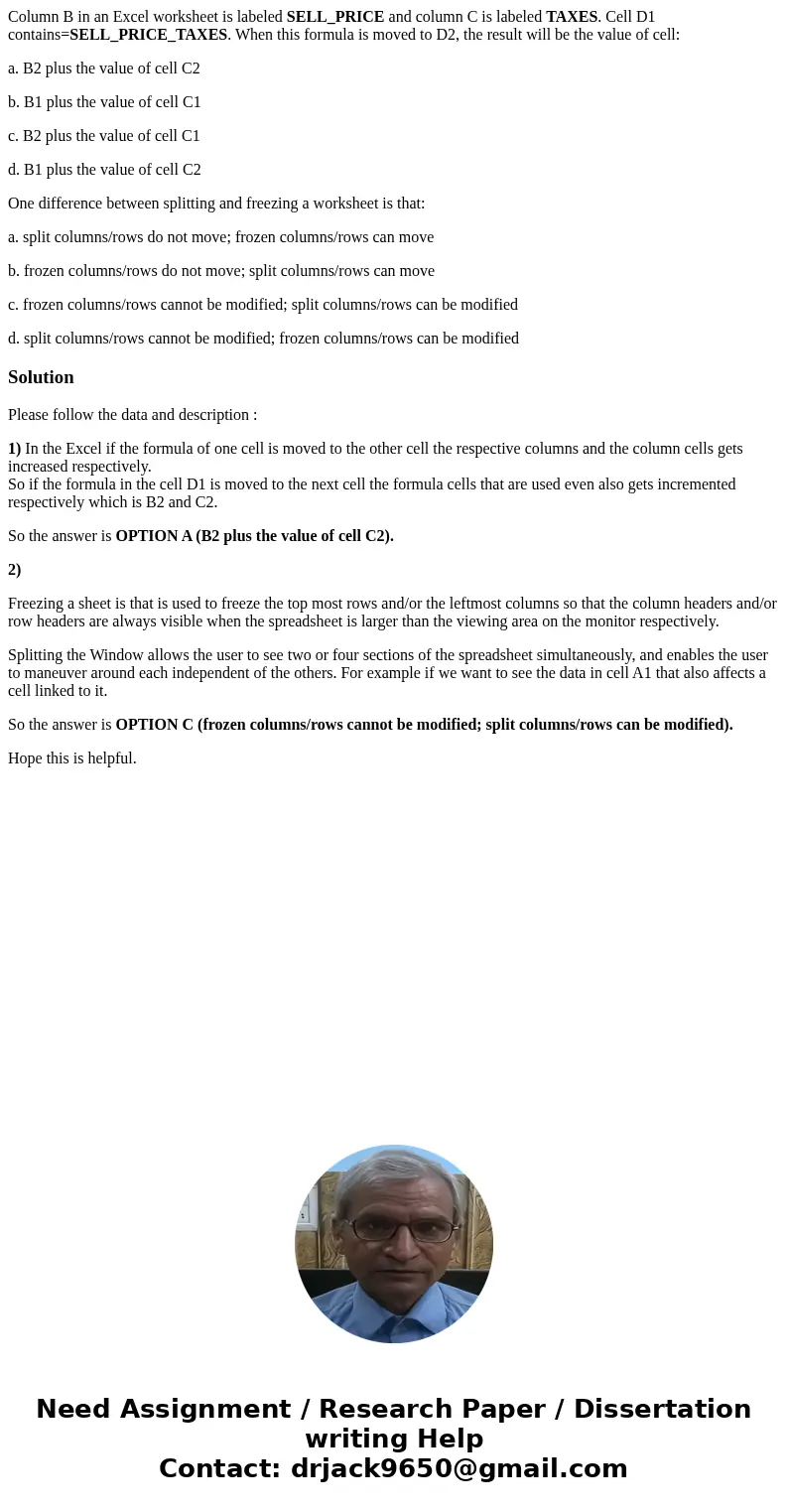Column B in an Excel worksheet is labeled SELLPRICE and colu
Column B in an Excel worksheet is labeled SELL_PRICE and column C is labeled TAXES. Cell D1 contains=SELL_PRICE_TAXES. When this formula is moved to D2, the result will be the value of cell:
a. B2 plus the value of cell C2
b. B1 plus the value of cell C1
c. B2 plus the value of cell C1
d. B1 plus the value of cell C2
One difference between splitting and freezing a worksheet is that:
a. split columns/rows do not move; frozen columns/rows can move
b. frozen columns/rows do not move; split columns/rows can move
c. frozen columns/rows cannot be modified; split columns/rows can be modified
d. split columns/rows cannot be modified; frozen columns/rows can be modified
Solution
Please follow the data and description :
1) In the Excel if the formula of one cell is moved to the other cell the respective columns and the column cells gets increased respectively.
So if the formula in the cell D1 is moved to the next cell the formula cells that are used even also gets incremented respectively which is B2 and C2.
So the answer is OPTION A (B2 plus the value of cell C2).
2)
Freezing a sheet is that is used to freeze the top most rows and/or the leftmost columns so that the column headers and/or row headers are always visible when the spreadsheet is larger than the viewing area on the monitor respectively.
Splitting the Window allows the user to see two or four sections of the spreadsheet simultaneously, and enables the user to maneuver around each independent of the others. For example if we want to see the data in cell A1 that also affects a cell linked to it.
So the answer is OPTION C (frozen columns/rows cannot be modified; split columns/rows can be modified).
Hope this is helpful.

 Homework Sourse
Homework Sourse